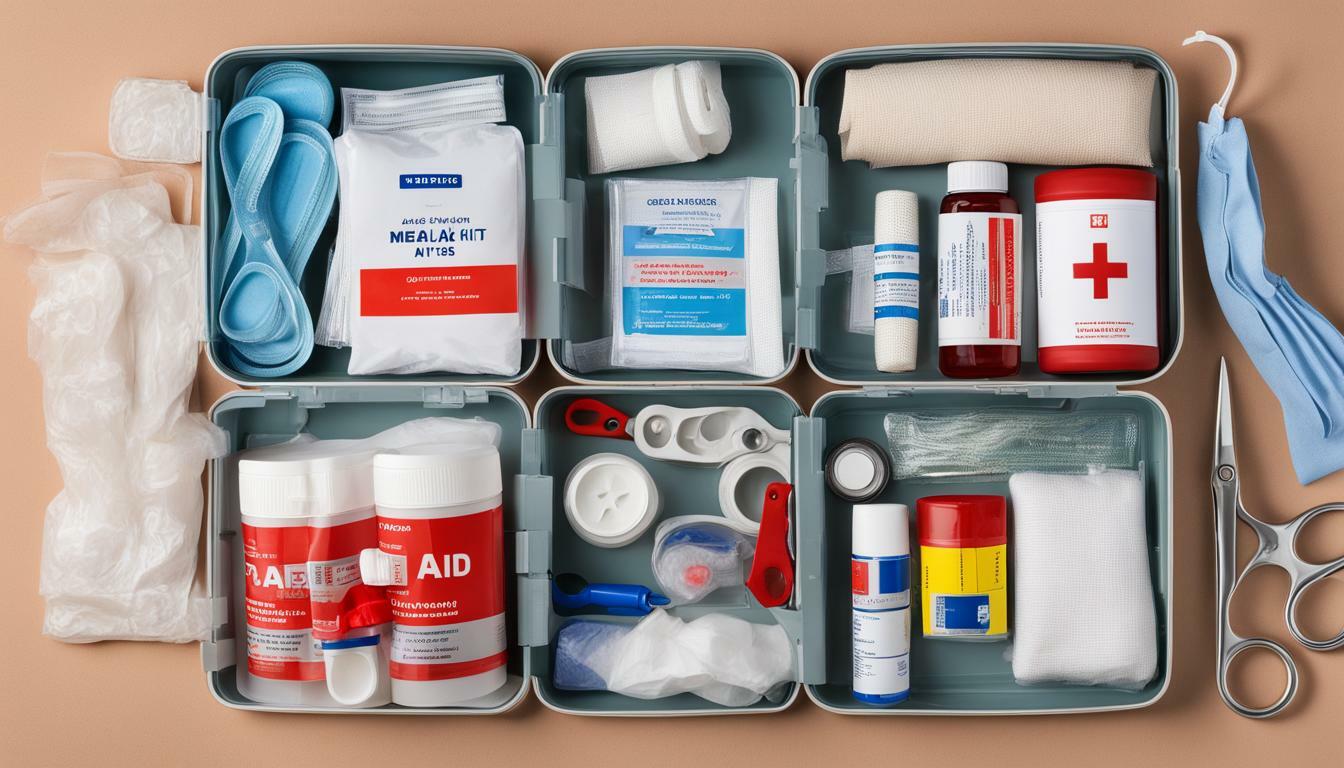Accidents and emergencies can happen anywhere and at any time. However, with the right first aid kit, you can be prepared to provide medical assistance when needed. Whether you need a first aid kit for your home, office, or outdoor activities, it’s crucial to choose the right one for your specific needs. Here’s what you need to know to make an informed decision on selecting the perfect first aid kit.
Key Takeaways
- Choosing the right first aid kit is crucial for being prepared for emergencies.
- Assess your specific needs to select the perfect first aid kit for you.
- Consider the essential supplies and equipment needed in a first aid kit.
- Maintain and regularly restock your first aid kit to ensure it’s always ready for emergencies.
Understanding the Importance of a First Aid Kit
A well-stocked First Aid Kit can be a lifesaver in emergency situations, providing immediate care and potentially preventing further injuries. It is essential to have the necessary supplies and equipment readily available to address common injuries, accidents, and illnesses. Whether at home, work, or play, accidents can happen when least expected, and a First Aid Kit can make all the difference.
Not only does a First Aid Kit provide you with basic medical supplies, but it can also help you to feel more secure and prepared in the event of an emergency. Having a properly stocked First Aid Kit ensures that you are ready to take action and care for yourself and others in need.
Having a First Aid Kit is especially important when traveling, whether you’re on vacation, hiking, or just out for a day trip. In unfamiliar surroundings, you may encounter different risks, and having a First Aid Kit can help you deal with unexpected situations.
First Aid Kit Essentials
While specific First Aid Kit contents may vary depending on your needs, there are some essentials that every kit should have. These include:
- Adhesive bandages in various sizes
- Gauze pads and roll bandages
- Antiseptic wipes or solution
- Scissors and tweezers
- Disposable gloves
- Triangular bandages or a sling
- Cold compress
- First aid manual or instructions
Adding additional items, such as pain relievers, allergy medication, or emergency blankets, may also be necessary depending on your needs.
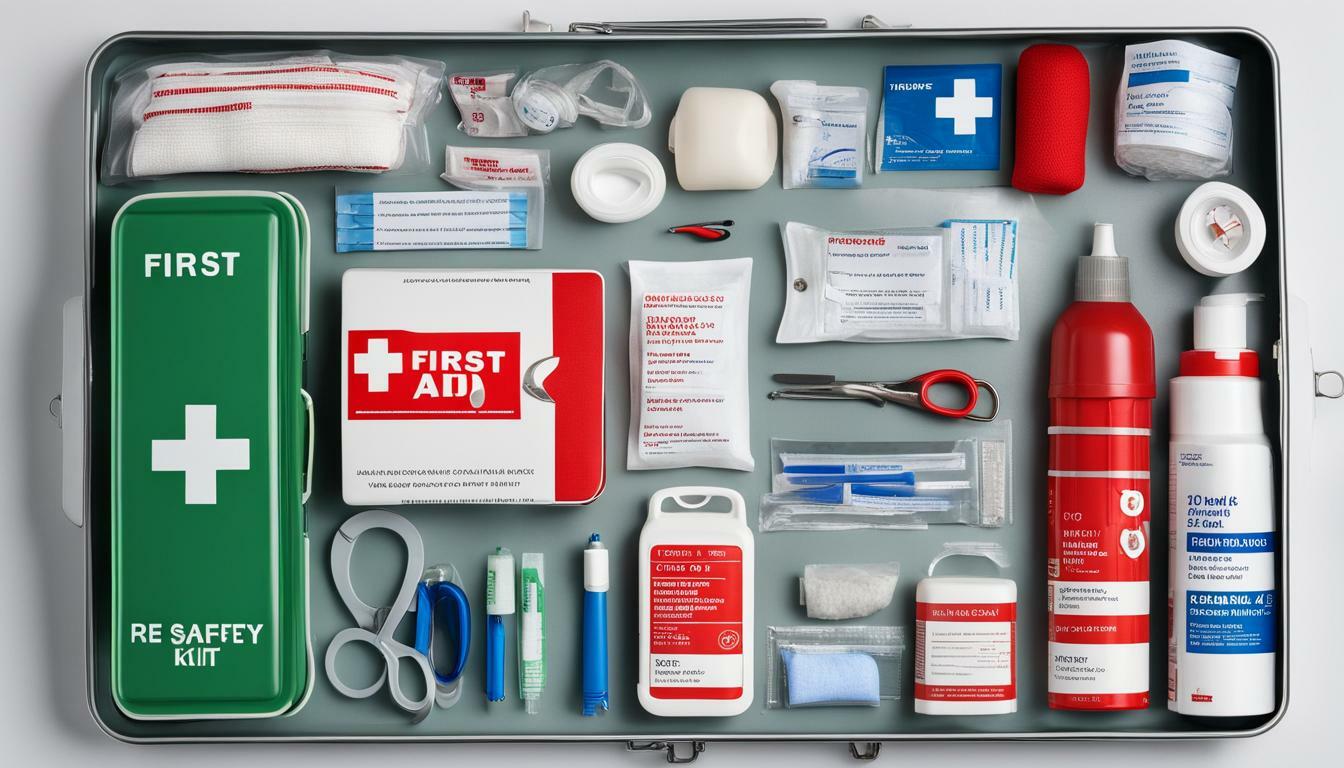
When assembling your First Aid Kit, be sure to consider your individual needs and the potential risks you may encounter. It is also important to keep your kit up to date and to replenish it regularly so that you are always prepared for any emergency.
Assessing Your First Aid Needs
Choosing the right first aid kit requires an understanding of your specific needs. When selecting the perfect first aid kit, consider the activities you engage in regularly, the number of people who will have access to it, and the types of injuries or medical conditions you are most likely to encounter. By doing so, you can make an informed decision when buying a first aid kit.
If you participate in sports activities, consider a kit that includes items such as compression bandages, instant ice packs, and elastic bandages. For home use, include essentials such as band-aids, antiseptic wipes, and gauze pads. If you’re preparing for a camping trip, choose a kit that caters to outdoor needs, such as insect bite treatment and blister treatments.
Your selection process, therefore, requires an assessment of your unique needs. It’s important to remember that selecting the right first aid kit can save lives in emergency situations.
Choosing a First Aid Kit – Factors to Consider
| Factors | Description |
|---|---|
| Size of the group | It is important to consider the number of people who will have access to the first aid kit. Select a kit that can accommodate the number of people it will serve. |
| Activity type | Different activities require different types of first aid kits. For instance, camping, sports, and home use require different kits. |
| Risks and hazards | Knowing the risks and hazards associated with your activities can help you choose the right first aid kit. For example, insect bites and sunburns are common hazards during camping trips. |
| Location | The location of your activities might determine the type of first aid kit you need. For instance, if you are going camping in a remote area, you need a kit that contains more supplies, including prescription medications. |
Using this first aid kit buying guide, you will be able to select the perfect first aid kit that caters to all your needs. Whether you’re preparing for your home, a camping trip, or a travel-friendly kit, make the right choice by assessing your needs according to the factors mentioned above.
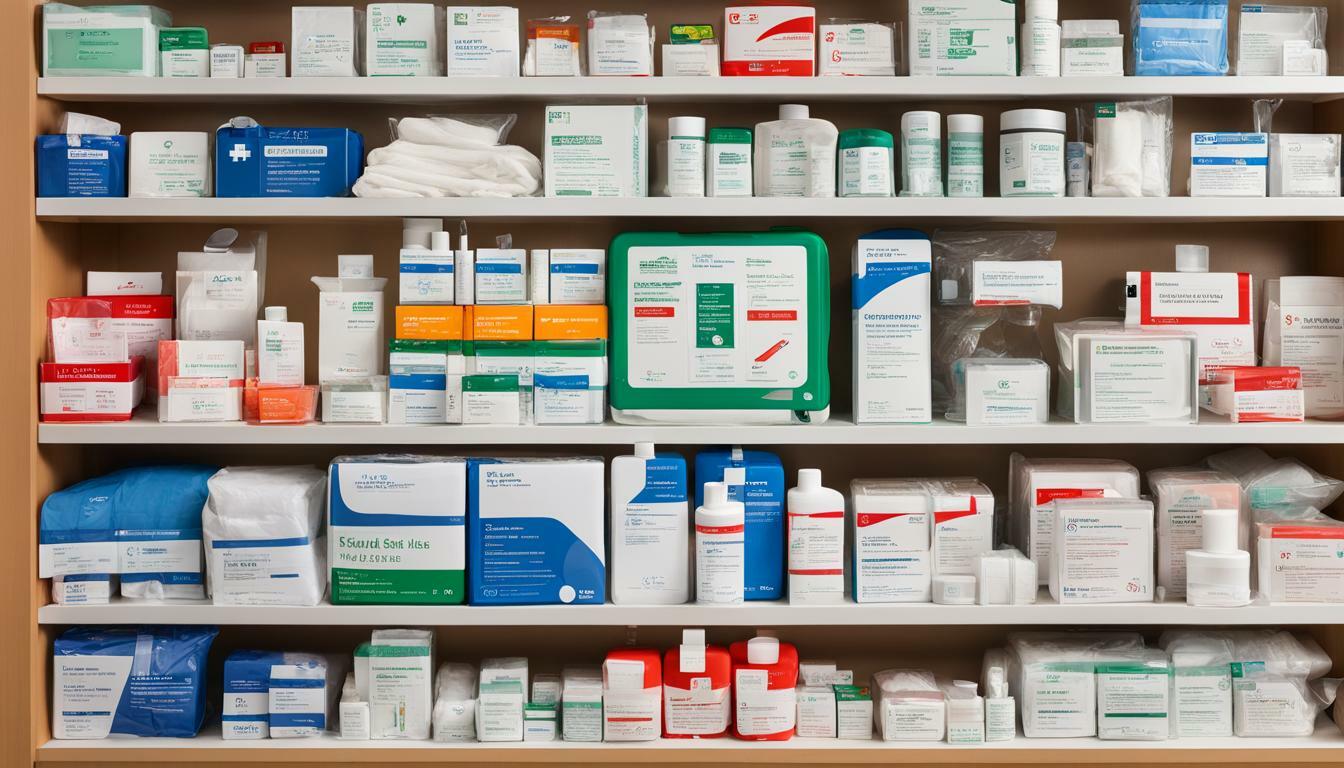
Understanding First Aid Kit Sizes and Types
When it comes to selecting the right first aid kit, size and type matter. You want to make sure that you have the appropriate supplies to meet the needs of the individuals who will be using the kit. That’s why it’s essential to assess your needs before making your purchase and create a first aid kit checklist.
First aid kits come in various sizes, from small travel-sized kits to large industrial-sized kits. If you’re purchasing a kit for a group or family, it’s best to opt for a larger size. That way, you can be sure that you’re prepared for any emergency that might arise.
It’s also crucial to consider the environment in which the kit will be used. For example, if you’re purchasing a kit to take on a camping trip, you’ll want to make sure that it’s waterproof and can withstand the elements. If you’re purchasing a kit to keep in your car, you’ll want to make sure that it’s compact and can fit easily into your trunk.
Types of First Aid Kits
There are several different types of first aid kits available, each designed to meet specific needs. Some of the most common types include:
| Type | Description |
|---|---|
| Home First Aid Kit | A kit designed for use in a home or residential setting. |
| Sports First Aid Kit | A kit designed for use in sports settings, such as on the field or court. |
| Travel First Aid Kit | A kit designed for use while traveling, whether domestically or internationally. |
| Workplace First Aid Kit | A kit designed for use in a workplace setting, such as an office or construction site. |
When selecting the type of kit you need, consider the activities you’ll be engaged in and the potential risks associated with those activities. For example, if you’re a hiker, you’ll want to opt for a travel first aid kit that includes items specifically designed for outdoor use, such as snake bite kits and insect repellent.
By taking the time to assess your needs and selecting the appropriate size and type of first aid kit, you can ensure that you’re fully prepared for any emergency that may arise.
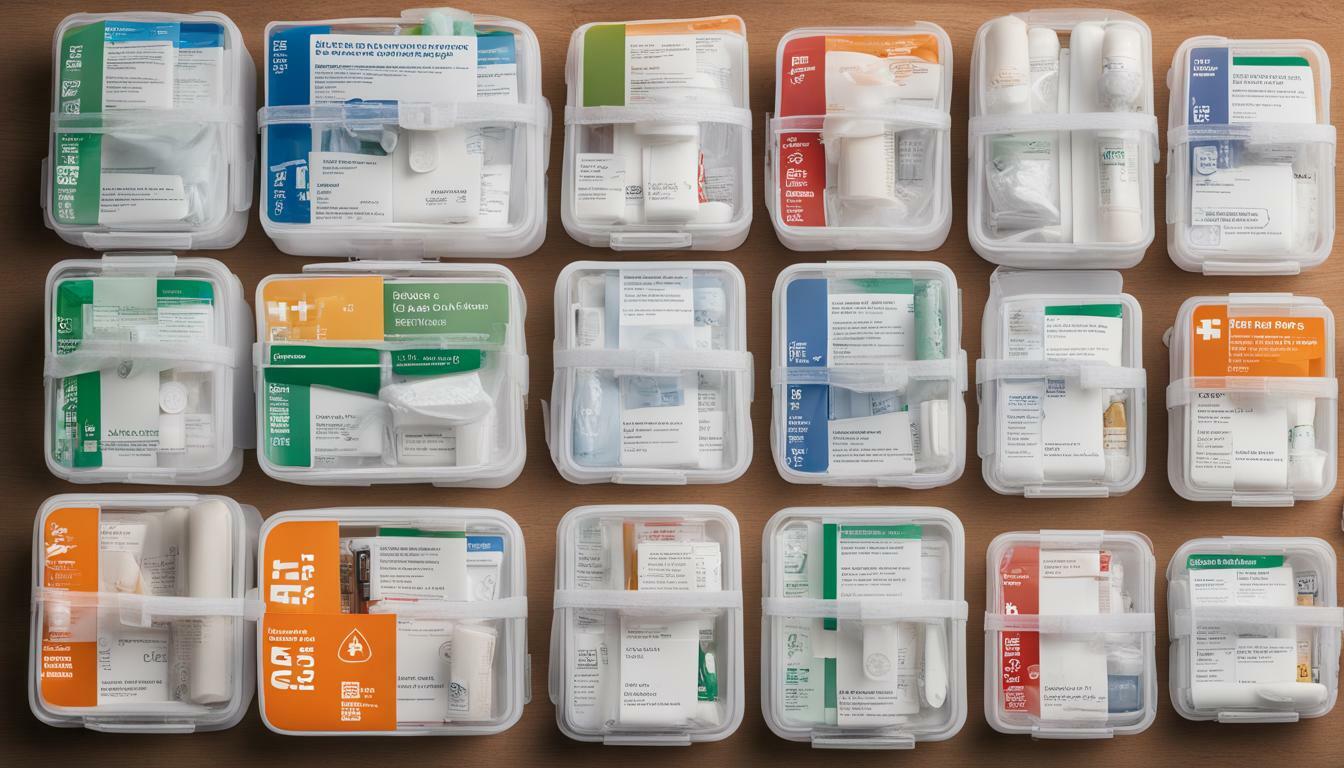
Essential First Aid Kit Supplies
A well-stocked first aid kit is essential for any emergency. Whether you’re at home, on the go, or at work, having the right supplies readily available can make all the difference. Below are some of the must-have items you should consider including in your first aid kit supplies:
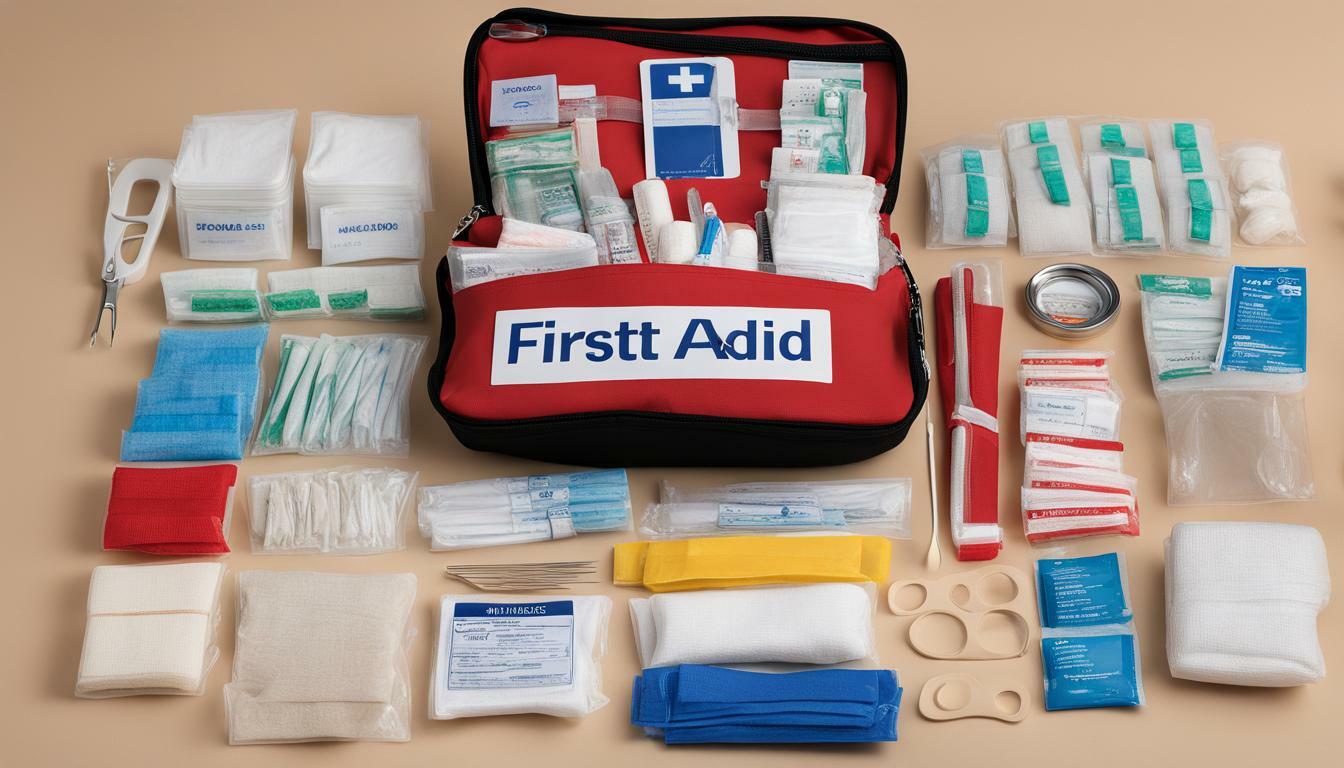
| Item | Description |
|---|---|
| Adhesive bandages | Assorted sizes to cover cuts and scrapes |
| Sterile gauze pads | To dress larger wounds |
| Adhesive tape | To secure bandages and dressings |
| Scissors | To cut tape, gauze, and clothing |
| Tweezers | To remove splinters and ticks |
| Antiseptic wipes | To clean wounds and prevent infection |
| Disposable gloves | To protect the caregiver from blood and body fluids |
| Instant cold compress | To reduce swelling and pain |
| First aid manual | To provide guidance on how to use the items in the kit |
These are just a few of the essential first aid kit contents you should consider including. Depending on your specific needs, you may also want to include items such as pain relievers, allergy medication, or emergency medication for chronic conditions. Always check the expiration dates of your supplies and replace any expired items.
Special Considerations for Travel First Aid Kits
When it comes to assembling a first aid kit for travel purposes, there are a few additional factors to consider. Not only do you need a kit that is portable and easy to carry with you, but you also need to take into account the potential risks at your destination and any size restrictions for different modes of transportation.
Before putting together your travel first aid kit, create a checklist of the essential items you will need. This will ensure that you don’t forget anything crucial and can help you avoid over-packing your kit with unnecessary supplies.
Consider the length and type of your trip when selecting the size of your first aid kit. A small, compact kit may be suitable for a weekend getaway, while a more comprehensive kit may be necessary for longer trips or those involving riskier activities.
Some essential items to include in your travel first aid kit are:
- Adhesive bandages to cover minor cuts and scrapes
- Sterile gauze pads to dress larger wounds
- Antibacterial ointment to prevent infection
- Anti-diarrhea medication in case of stomach upset
- Pain relievers for headaches, muscle aches, and other discomforts
- Tweezers and scissors for removing splinters or cutting bandages
- Disposable gloves to protect yourself when providing first aid to others
- Thermometer to monitor any fevers or other symptoms
- Medical tape to secure bandages or dressings in place
In addition to these items, consider any specific medical needs you or your travel companions may have. If anyone in your group has a severe allergy or requires medication, be sure to include those items in your kit.
Remember, a well-stocked and well-organized travel first aid kit can make all the difference in an emergency situation. Pack it in a waterproof and durable container, and always double-check that you have everything you need before departing on your trip.

Quality and Durability of First Aid Kits
When it comes to choosing the best First Aid Kit, quality and durability are key considerations. A well-made Kit will ensure that your medical supplies remain intact and usable during emergencies. It is essential to invest in a Kit that can withstand wear and tear, and that is manufactured by a reputable supplier.
One of the essential factors to consider when choosing a First Aid Kit is the materials used in its construction. Look for Kits that are made using high-quality materials, such as durable plastics or metals that are resistant to corrosion. A sturdy case or bag will protect the contents inside from external damage, making it a worthwhile investment in the long run.
The contents of a First Aid Kit should also be of excellent quality. It is crucial to select a Kit that contains supplies from reputable brands that have undergone strict quality control processes to ensure their effectiveness. Avoid purchasing Kits with cheap and substandard supplies, as they may not provide adequate medical care during emergencies.
Another critical factor to consider when choosing a First Aid Kit is its size and capacity. Select a Kit that can accommodate all the necessary supplies, equipment, and medications required for your specific needs. A larger Kit may be necessary for outdoor activities such as camping or hiking, while a smaller one may be suitable for travel purposes.
When shopping for a First Aid Kit, it is essential to compare various options and select the best one that meets your requirements. Look for Kits that come with a comprehensive manual or guide to assist you in using the contents correctly. It is also a good idea to check for any certifications or awards for quality and safety that the Kit may have received.
Finally, remember to regularly inspect and restock your First Aid Kit to ensure its effectiveness during emergencies. The medical supplies may expire, become damaged, or get used up over time, so it is crucial to keep track of their condition and replace them as necessary. A well-maintained and well-stocked Kit will ensure that you are always prepared for any situation.
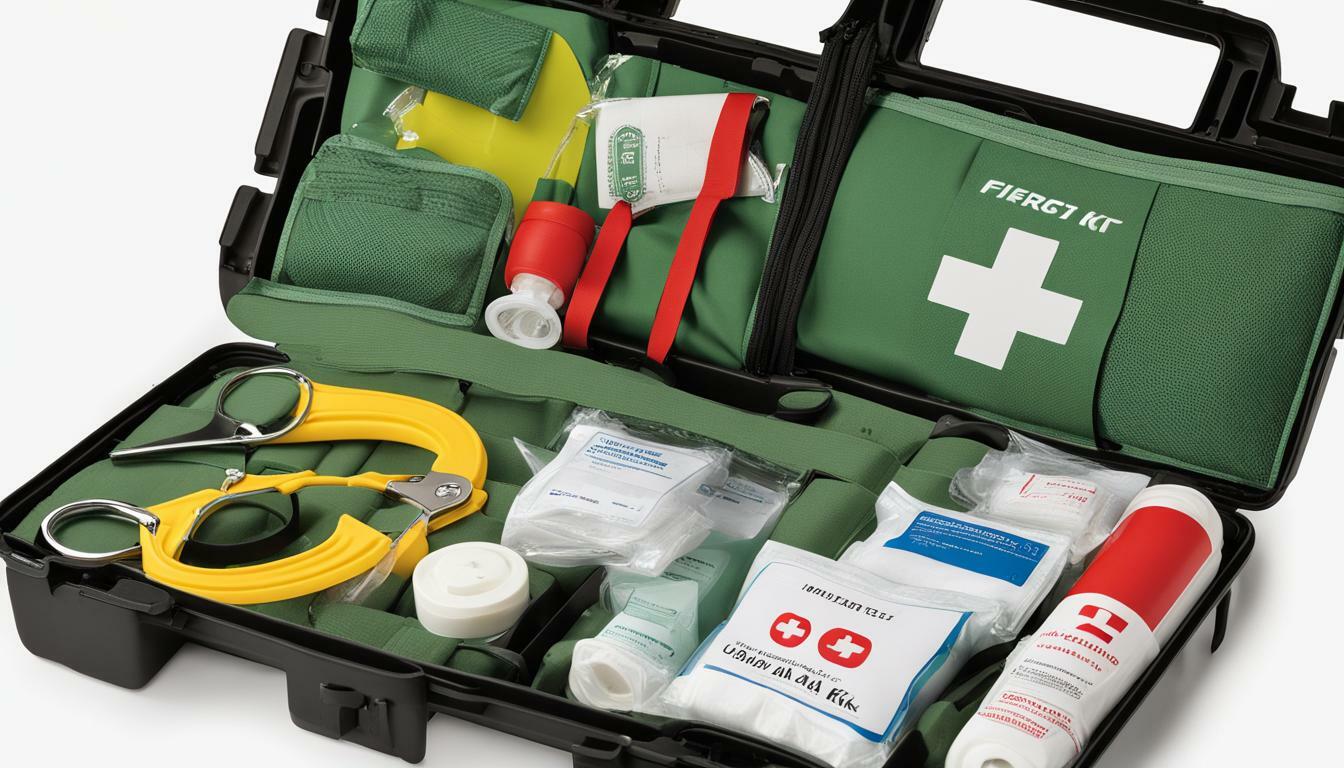
Maintaining and Restocking Your First Aid Kit
Once you have chosen and assembled your first aid kit, it’s crucial to regularly check and replenish its contents. Medical supplies may expire or get used up over time, so maintaining and restocking your kit is essential.
First, start by setting a schedule to check and update your kit. You can mark a specific day on your calendar, such as the first day of each month, to ensure you don’t forget.
Start by checking the expiration dates of all medical supplies in your kit, such as ointments, creams, and medications. Remove and replace any expired items to ensure the effectiveness of your kit.
You should also check to make sure that your first aid kit is fully stocked and that each item is in good condition. Some items, such as bandages and gauze, can become damaged or dirty over time, so it’s important to replace them as needed.
If you’ve used any supplies from your first aid kit, be sure to replace them promptly. Don’t wait until your next scheduled check to replenish your supplies.
It’s also a good idea to keep a first aid kit checklist on hand to ensure you don’t forget any essential items when restocking your kit. You can create your checklist by referring to the items listed in our previous sections.
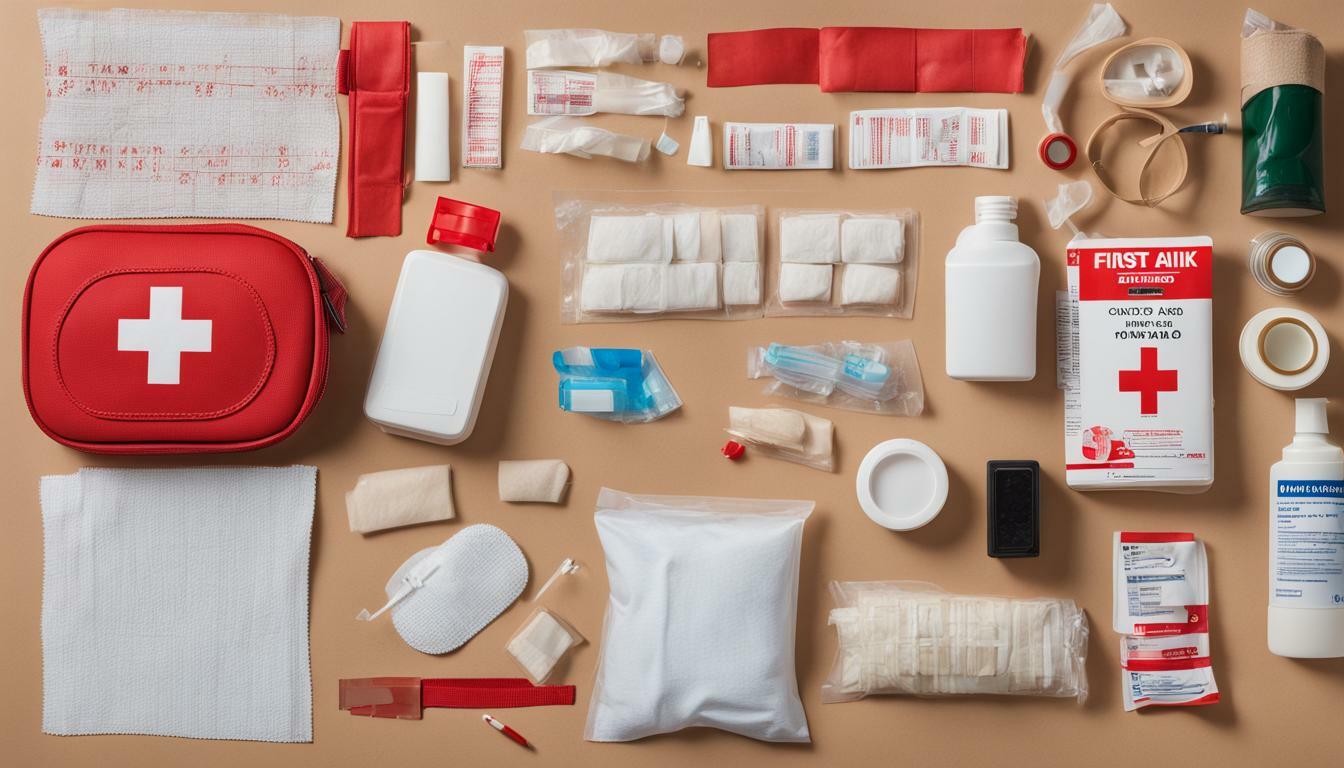
Remember, the effectiveness of your first aid kit depends on its contents being up to date and well-maintained. Make sure you regularly check and restock your kit, so you can be prepared for any emergency.
Additional Considerations for Specific Needs
When selecting the perfect first aid kit, it’s important to consider any specific needs or requirements based on your activities or environment. This will ensure that you have the necessary supplies to address potential injuries and emergencies.
If you’re planning on hiking or camping, for example, a compact and lightweight first aid kit that can fit in your backpack may be necessary. Be sure to include items such as blister pads, insect sting relief, and sunscreen to address common outdoor injuries and conditions.
For sports activities, a first aid kit should include supplies to treat common injuries such as sprains and bruises. Consider including cold packs, athletic tape, and compression bandages.
If you work in a hazardous environment, such as a construction site, your first aid kit should include supplies to address potential injuries such as cuts and burns. Be sure to include items such as burn gel and sterile eye wash to address specific hazards.
It’s important to assess your specific needs and potential risks to ensure that you have a first aid kit that is tailored to your requirements. By considering any additional requirements, you can ensure you are fully prepared for any situation.
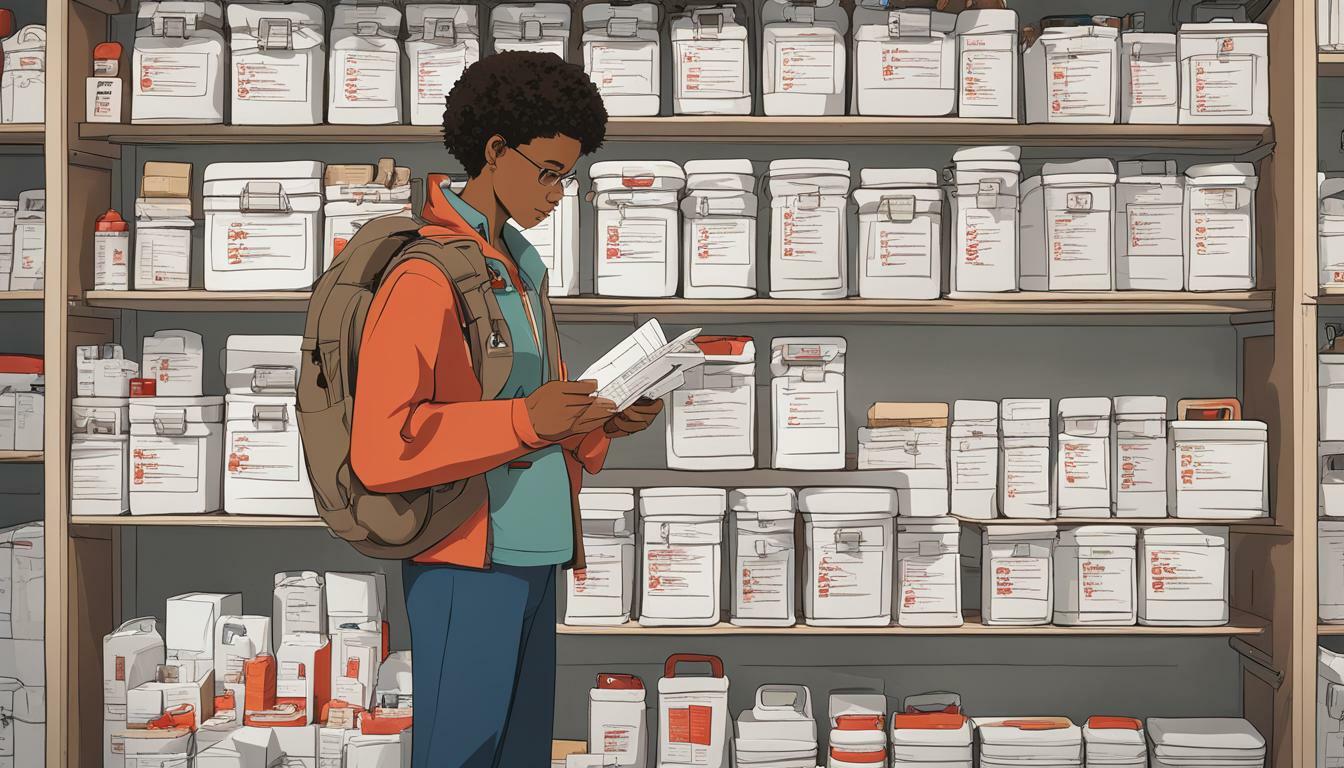
Finding the Right First Aid Kit Supplier
Once you have assessed your first aid needs and identified the type of kit you require, it is vital to find a reputable supplier to purchase it from. With numerous options available, selecting the best supplier can be overwhelming. However, with a little research, you can find a supplier that offers high-quality kits and excellent customer service.
When searching for the best first aid kit supplier, consider the following:
- Look for a supplier that offers a wide range of first aid kits to choose from, ensuring that you can find the perfect one to meet your needs.
- Ensure that the supplier’s kits contain all the essential first aid supplies, including bandages, gauze pads, adhesive tape, scissors, tweezers, antiseptic wipes, and disposable gloves.
- Read reviews from previous customers to get an idea of the supplier’s reliability and customer service.
- Check whether the supplier offers free shipping or has reasonable shipping rates.
One supplier that checks all these boxes is First Aid 4 Less. They offer a vast selection of high-quality first aid kits to cater to your specific needs, from small travel kits to comprehensive workplace kits. Their kits contain all the essential first aid supplies and are regularly updated to ensure they are up to date and effective. Additionally, First Aid 4 Less offers free shipping on orders over £50, making them an affordable and reliable option for your first aid kit needs.
Investing in the best first aid kit is essential, but finding the right supplier to purchase it from is just as crucial. Take the time to research and compare different suppliers before making a decision, and choose one that offers high-quality kits, excellent customer service, and reasonable shipping rates.
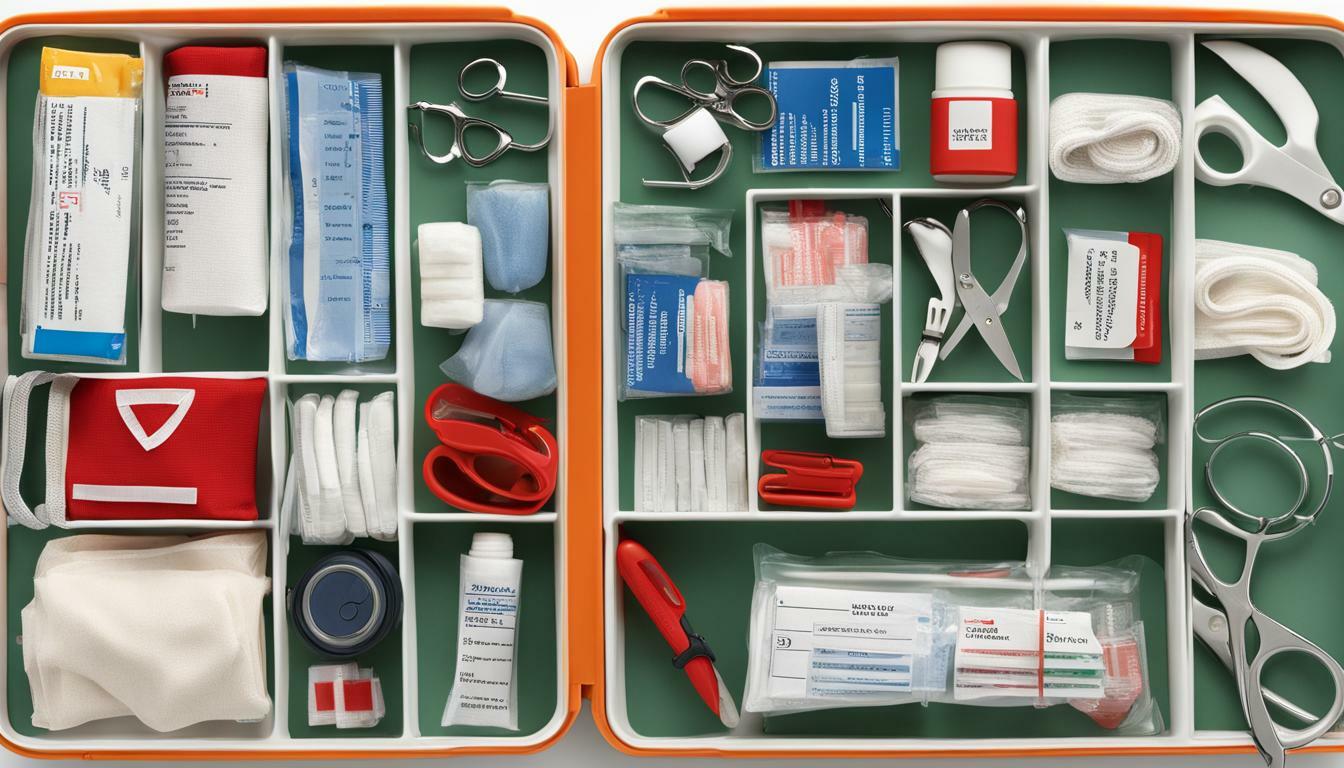
Conclusion
Choosing the right first aid kit is essential in being prepared for emergencies. With the information provided in this guide, you can make an informed decision that meets your specific needs. Remember to assess your requirements, consider the size and type of kit, and select high-quality and durable supplies.
Regularly maintaining and restocking your first aid kit is vital to ensure its effectiveness during an emergency. Don’t forget to address any special considerations for specific activities, such as hiking or sports.
When looking for a supplier, select one that offers high-quality kits, excellent customer service, and reliable shipping options.
Overall, having a well-stocked first aid kit can provide immediate care and potentially prevent further injuries. So, take the time to choose the right kit for you, and be ready for any situation that may arise.
